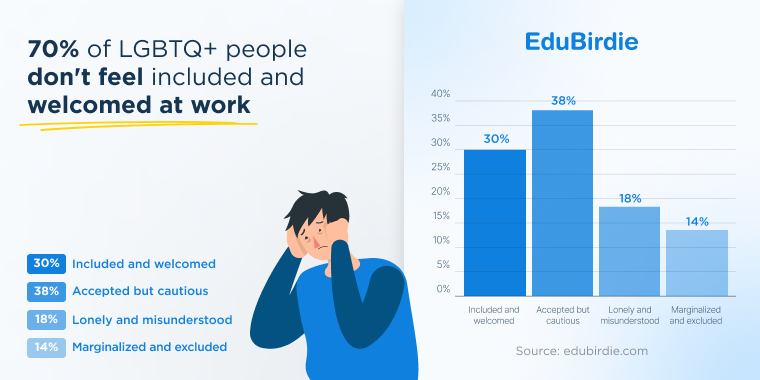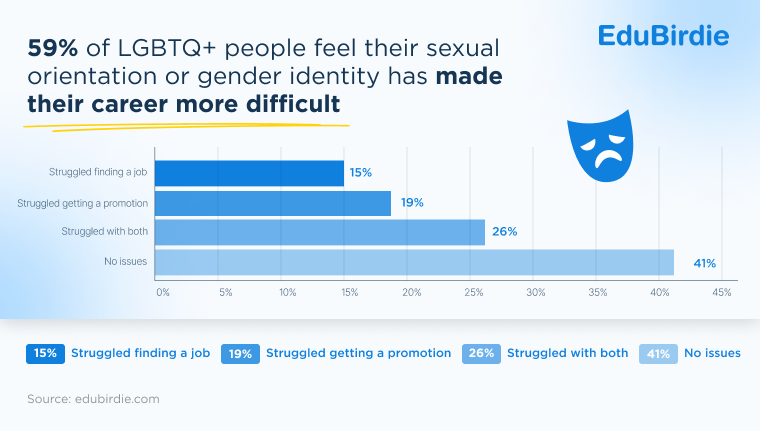
LGBTQ+ employees' careers taking a hit due to lack of acceptance

Nearly half of employees who identify as members of the LGBTQ+ community have left their employers because of lack of acceptance, according to a new report.
Findings from EduBirdie's survey among 2,000 members of the LGBTQ+ community revealed that 44% of employees have resigned from their workplace due to a lack of acceptance.
This results also highlighted the challenges faced by majority of the respondents in the workplace because of their sexual orientation or gender identity.
More than three in five employees said they have faced discrimination from their colleagues, management, or both, according to the report.
A bigger 70% also said they don't feel welcomed in the workplace, including 38% who said they are "accepted but cautious."

In reporting instances of discrimination, 15% of the respondents said their HR department or management didn't help them. More employers, however, acted on cases of discrimination, such as:
But amid fears that they could get ignored, some 21% of LGBTQ+ employees said they chose not to report unfair or abusive treatment in the workplace.
In the wake of these challenges, LGBTQ+ employees' careers are taking a hit.
Nearly six in 10 said their career has become more difficult due to their sexual orientation or gender identity, reporting challenges on getting promoted and finding a job.

Among those who do get job offers, 53% said they would turn it down if the organisation lacked a programme aimed at supporting underrepresented groups.
Colin Druhan, Executive Director of Pride at Work Canada, previously spoke with HRD on how organisations can be better allies to the LGBTQ+ members of their workforce.
"There's no easy fix 'silver bullet,'" Druhan previously told HRD. "But the first thing I would suggest to someone is to take a look around your workplace… which groups are excluded?"
This question should identify the gaps, according to Druhan.
"Your next step would be to find those communities, ask them what specific barriers they are facing, ask them what you need to do to change. Pop the bubble you're in."